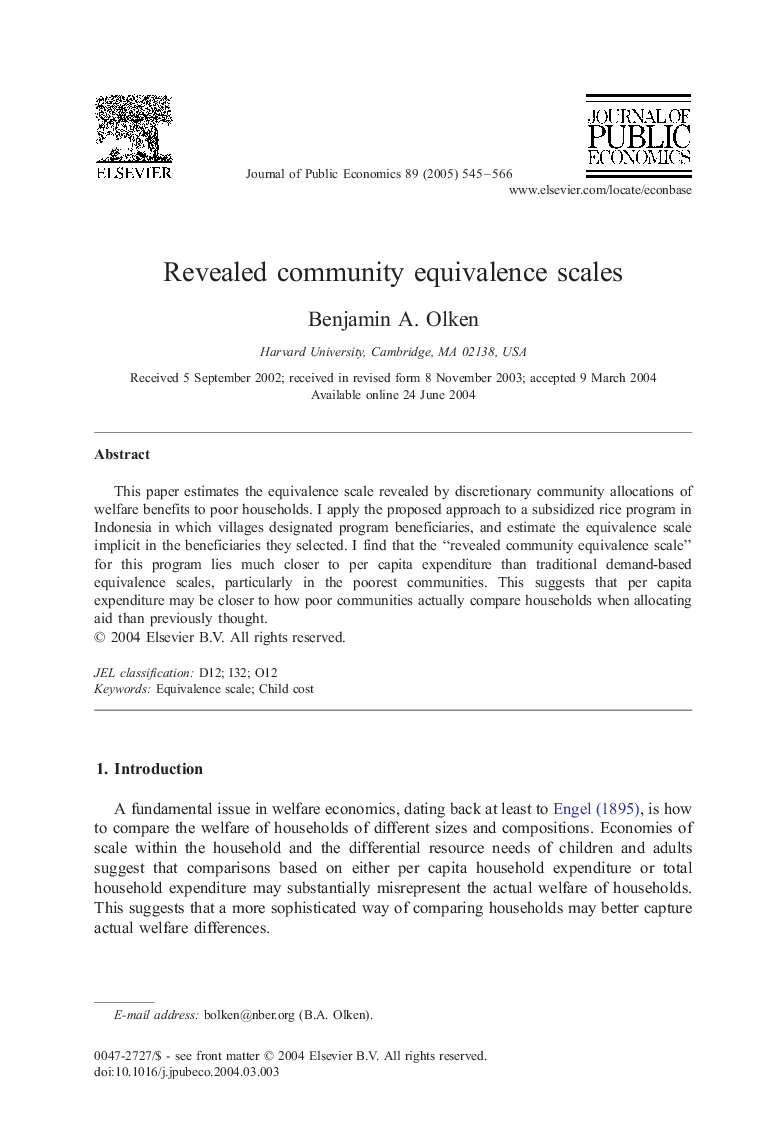| Article ID | Journal | Published Year | Pages | File Type |
|---|---|---|---|---|
| 9726888 | Journal of Public Economics | 2005 | 22 Pages |
Abstract
This paper estimates the equivalence scale revealed by discretionary community allocations of welfare benefits to poor households. I apply the proposed approach to a subsidized rice program in Indonesia in which villages designated program beneficiaries, and estimate the equivalence scale implicit in the beneficiaries they selected. I find that the “revealed community equivalence scale” for this program lies much closer to per capita expenditure than traditional demand-based equivalence scales, particularly in the poorest communities. This suggests that per capita expenditure may be closer to how poor communities actually compare households when allocating aid than previously thought.
Keywords
Related Topics
Social Sciences and Humanities
Economics, Econometrics and Finance
Economics and Econometrics
Authors
Benjamin A. Olken,
